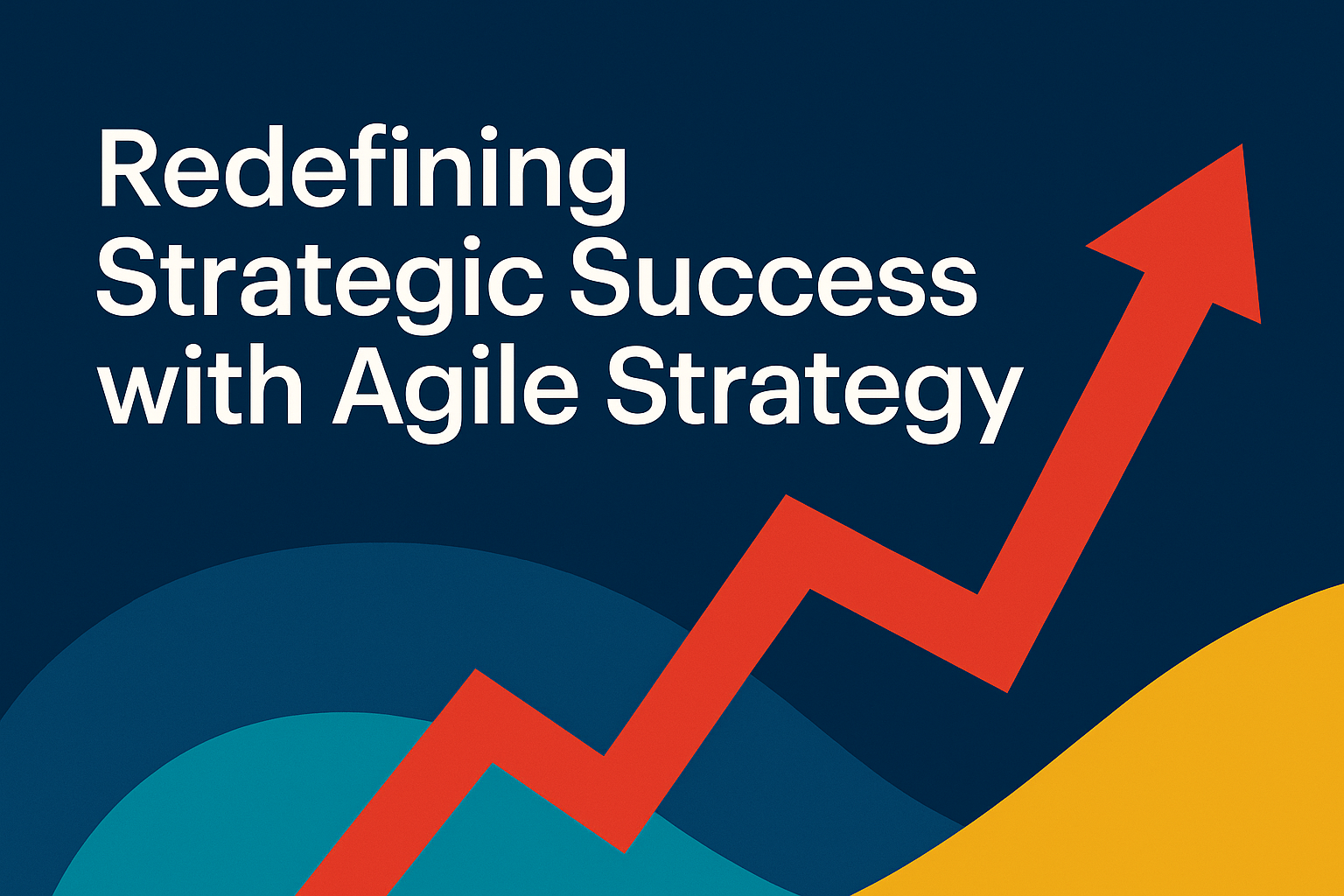What if the traditional approach to strategy is no longer enough? For decades, managers have relied on long-term, linear processes to guide their organizations, only to encounter delays, misalignments, and unforeseen obstacles. But in today’s fast-paced, data-driven business environment, where competitors pivot in real-time, shouldn’t your strategy do the same?
This article explores agile strategy as the solution to modern challenges and explains why it’s no longer a luxury but a necessity to secure competitive advantage and deliver meaningful outcomes.
The Case for Agile Strategy
Linear strategy models are on life support. Many organizations, under the guise of transformation, are still clinging to outdated processes that fail to match the demands of today’s dynamic business landscape. From struggling with workforce support to managing misaligned resources, traditional strategies falter under the weight of complexity.
Furthermore, the need for speed and adaptability has never been more critical. A manager from a leading global company recently emphasized that decisions are no longer tied to quarterly reports. Instead, real-time proxies like competitor logistics usage reveal critical insights long before the next board meeting. The world moves faster, and relying solely on lagging indicators for strategy will leave businesses playing catch-up.
To compound matters, many companies embarking on agile transformations fail to integrate agility into their strategic processes. Agile initiatives stall when confined to operational siloes or project-specific endeavors. What’s missing is a coherent, agile-driven strategic model that permeates the entire organization.
To gain a sustainable edge, enterprises need more than agility in operations; they need strategic agility to pivot, react, and innovate seamlessly across all dimensions of their business.
Key Benefits of Agile Strategy
Agile strategy offers more than just speed; it brings critical advantages to forward-looking organizations, including:
- Rapid Adaptation: Quickly respond to market changes, the competitive landscape, and customer needs.
- Data-Driven Decisions: Rely on real-time insights to inform actions, reduce uncertainty, and enhance strategic accuracy.
- Collaborative Problem-Solving: Empower cross-functional teams to contribute, ensuring alignment from vision to execution.
- Continuous Learning: Use iterative cycles to test, learn, and adapt, creating a culture of growth and resilience.
The Evolutionary Path to Agile Strategy
Transitioning to agile strategy demands a shift—not just in process, but in the organizational mindset and culture. For most businesses, transformation begins with introducing agile practices like SCRUM or Kanban within specific departments. But these efforts rarely go far enough.
To truly thrive with agility, organizations must evolve through three interconnected phases:
- Doing Agile: Implementing agile practices in select projects or teams.
- Being Agile: Building a supportive culture where values like adaptability, collaboration, and customer-centricity guide decision-making.
- Agile Strategy: Fully integrating agility into the strategic process, creating dynamic systems that unite execution with adaptable long-term goals.
Cultural Readiness Matters
It’s essential to note that agile strategy must be supported by organizational culture. Leaders who maintain rigid, top-down management styles or attempt to bypass capability assessments may inadvertently undermine progress. Meanwhile, fostering an adaptive culture that values inclusivity and collaboration will help organizations overcome the inertia of traditional models.
Success largely depends on addressing the readiness of the organization during the process of strategizing, allowing gaps to be identified and addressed in real-time.
Learn how our AI Plan Assistant helps leaders assess readiness and implement agile strategy across teams.
The Changing Role of the Strategist
With the emergence of agile strategy comes a fundamental shift in the role of strategists. Gone are the days when strategists operated as solitary architects of organizational plans, dictating a one-size-fits-all solution from the top.
From Controller to Facilitator
Strategists in agile organizations step beyond the confines of top-down authority, adopting roles as collaborative enablers and data-driven mentors. Their focus shifts to facilitating decision-making across cross-functional teams, ensuring alignment between day-to-day actions and broader organizational goals.
Key responsibilities include:
- Fostering Collaboration: Encouraging diverse input and empowering teams to drive strategic initiatives.
- Aligning Vision to Action: Ensuring the company’s vision is clearly communicated and aligned with real, measurable objectives.
- Championing Learning Cultures: Promoting an iterative approach where teams continuously test, learn, and improve.
Agile strategists wield influence through support and guidance rather than control, driving meaningful outcomes by empowering their teams. This transition not only improves innovation and alignment but also builds trust and engagement within the workforce.
Addressing Industry Challenges with Agile Strategy
Managers today face unprecedented complexity in overcoming delays, managing misaligned resources, and nurturing workforce buy-in for strategic initiatives. Agile strategy provides clear, actionable solutions to these persistent barriers.
1. Overcoming Delays with Iterative Flexibility
Traditional timeline-driven projects often result in bottlenecks. Agile strategy pivots toward iterative cycles with shorter timelines, providing room for mid-course corrections based on real-time insights.
Example: A leading logistics firm achieved a 30% reduction in time-to-market by shifting from annual strategic reviews to quarterly sprints utilizing agile principles.
2. Aligning Strategies Across Resources
Agile strategy emphasizes a holistic view of organizational resources, ensuring that teams have the proper tools, people, and systems to execute plans effectively. Real-time dashboards and analytics help leadership monitor and adjust resource allocation seamlessly.
Example: Technology retailer X revamped its supply chain strategy using agile frameworks, leveraging data to align inventory targets with fluctuating customer demand in real time.
3. Engaging the Workforce
Change management is often a hurdle during transformation processes. Agile strategy fosters a bottom-up culture that not only encourages team input but makes employees active participants in the solution.
Example: A financial institution introduced agile team workshops as part of its transformation, resulting in a 45% increase in employee satisfaction and retention rates during a restructuring phase.
Why Now Is the Time to Transition
The pace of change in the modern business world will only continue to accelerate. Organizations that cling to rigid, linear strategic processes are standing still in a market that never stops moving.
Transform with Core-Strategy
At Core-Strategy, we believe it’s time to eliminate the barriers that hold strategy hostage. Our platform bridges the gap between vision and execution, offering organizations the tools they need to plan, implement, and adapt strategies for the demands of today’s market.
Say goodbye to disconnected tools and static plans. Experience the transformative power of agile strategy with Core-Strategy.
Schedule your demo today and discover how Core-Strategy can unlock your organization’s true potential.


